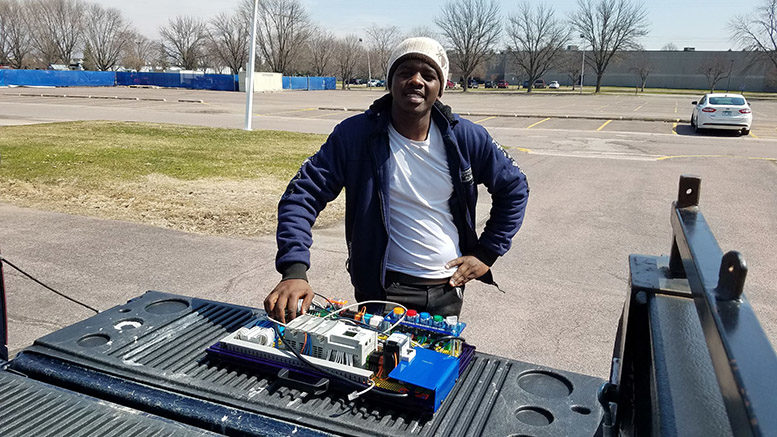Principal investigators of Advanced Technological Education (ATE) grants “leveraged” their COVID-19 experiences and ATE assets to transform the virtual High Impact Technology Exchange Conference (HI-TEC) into a giant help session for sharing strategies to deliver hands-on technical content for remote teaching.
These community college faculty leaders offered practical advice and many free resources during panel discussions and via the chat room of the Zoom meeting, which drew 1,000 people from 42 states and Puerto Rico for free, thanks to National Science Foundation (NSF) funding. The recorded sessions and chats are available online.
For 27 years, NSF has used ATE grants, in which two-year college educators have leadership roles, to enhance the skilled technical workforce. During the July 29 sessions, 10 educators described how they used their ATE work to help students and colleagues respond to the education challenges created by COVID-19.
New approaches
For instance, Doug Laven, a mechatronics instructor at South Central College (Minnesota), distributed low-cost trainers (which he began creating with an ATE grant in 2013) from his truck in the college parking lot this spring so students could complete tactile lessons with programmable logic controllers from their homes. To assess students’ learning at the end of the semester, Laven held individual Zoom sessions with students and watched as they troubleshot programming bugs that he had emailed to them.
Jared Ashcroft, a natural sciences professor at Pasadena City College (California) and director of the newly funded Micro Nano Technology Education Center, kept an undergraduate research program going by having students analyze data from online simulations and labs with him during weekly remote meetings. Students also used other software on different aspects of the project.
Mike Qaissaunee, an engineering and technology professor and department chair at New Jersey’s Brookdale Community College, ramped up distribution of the interactive lessons that he built with ATE support for teaching cybersecurity, electronics, chemistry, environmental science and physics.
Tips to prepare for the fall
Ann Beheler, director of the National Convergence Technology Center at Collin College (Texas), offered HI-TEC participants her team’s help to set up Google forms and sheets.
To lower students’ COVID-induced stress, Linnea Fletcher, principal investigator of InnovATEBIO National Biotechnology Education Center at Austin Community College (Texas), devoted a few minutes at the start of each class for students to talk about how the pandemic was affecting their lives. Instead of online exams, she had students present their work in PowerPoint presentations similar to what they would have to do in the workplace.
Related article: Tech, communication skills more important than ever
One of the tips that Jill Zande, president and executive director of MATE Inspiration for Innovation, shared from the California non-profit’s migration of its underwater robotics professional development program to distance delivery is to go over checklists with workshop participants a week in advance to make sure they have acquired items on tool-and-material lists.
Tom Tubon, a co-principal investigator of InnovATEBIO, recorded videos with lab equipment at his home to teach remote biotechnology courses for students at Madison Area Technical College (MATC) in Wisconsin. Now that the quick transition to remote instruction has passed, Tubon said he and other educators are facing the bigger challenges of ensuring that students feel safe in re-opened labs and that virtual content is truly accessible for all users by incorporating Universal Design for Learning concepts.
Using CARES Act funds
Tubon noted that MATC devoted some of its CARES Act funding to hire three instructional designers to help faculty create virtual content that meets course objectives and complies with the Americans with Disabilities Act.
“The need for accessible resources becomes really, really important,” Tubon said, explaining that technical educators are trying to retain the hands-on components of their courses even when they must use remote technologies.
“We are in very unique times, and we’re all just trying to do the best we can,” he said.

